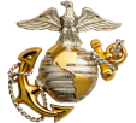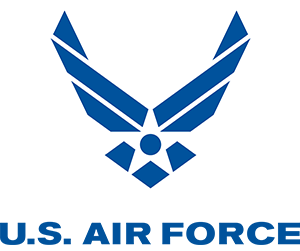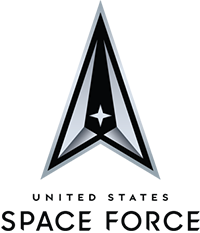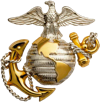
Service Branches
Work Environment
Air crew members work inside all sizes and types of aircraft based on land or aboard ships. They fly in all types of weather and in both hot and cold climates. Some air crew members, such as flight attendants, work on land and in airplanes.
-
Military Status
Enlisted
-
Median Military Salary This is the median, or the midpoint, of the salary range for this career.
$72,443
Military Salary Range Salary varies based on years of service, degree level, special pays, family status and location.
$24,754 - $257,316
Overview
Air crew members perform in-flight duties to ensure the successful completion of combat, reconnaissance, transport, and search and rescue missions. They perform inspections to ensure equipment is in working order. They operate and monitor engine and aircraft systems controls, panels, indicators, and devices. Their responsibilities may vary by type of aircraft, and include such tasks as operating mine sweeping, refueling, and electronic warfare systems.
Military Training
All enlisted service members complete basic military training, which includes time spent in a classroom and in the field, and covers tactical and survival skills, physical training, military life and customs, and weapons training. Air crew members will gain skills through classes and on-the-job experience, including practical experience in aircraft systems operation and maintenance. Further training occurs on the job through actual flying time. There are additional courses covering air crew survival, scuba diving, parachuting, aircraft maneuvering, and combat crew training. Training content varies by specialty and may include:
- Operation of aircraft gunnery systems
- Operation of aircraft in-flight refueling systems
- Cargo, munitions, and fuel load planning
- Rescue and recovery operations
Helpful Attributes
- Ability to work as a team member
- Ability to work under stress
- Interest in flying
- Ability to work with mechanical and electrical systems
Related Civilian Careers
- Passenger Attendants
- Airline Pilots, Copilots and Flight Engineers
- Flight Attendants
- Transportation Security Screeners
- Photographers
- Aircraft Mechanics and Service Technicians
- Aerospace Engineering and Operations Technologists and Technicians
- Airfield Operations Specialists
Naval Aircrewman Helicopter – Sierra – AWS
Swimming, flying, saving lives—the job of an AWS is that of a superhero. Naval Aircrewmen are the versatile operators behind the cockpit of a helicopter. They are the lookouts, the weapons, the swimmers and the rescuers. One day they could be leaping from an MH-60 Sierra, into the ocean to save a life, the next they’re shooting down enemy craft or evacuating the injured.
Length 2:48 View TranscriptTranscription
Introduction:
Winds are 270 at two-six.4 miles visibility. View 500 - Broken 3,000.
Voiceover:
Speaker 1: Enjoy swimming. Enjoy being in the water. Don't be afraid of heights. The primary role of an Aircrewman is keeping everybody safe.
Speaker 2: We know pretty much everything there is to know about that helicopter.
Speaker 1: Pilots have ten to two - crewmen have everything back.
Speaker 3: H-60 Sierra - they're very light so they can carry more and they're mostly going to be carrying people.
Speaker 2: We do a lot of special operations support. Transporting teams and assisting them in any way necessary.
Speaker 3: We're currently doing ammo offload, so helicopters will fly from the carrier to the supply ship.
Speaker 4: I joined to be a swimmer.
Speaker 3: Put me in the water at 15 feet I was gonna jump in find whoever was out there.
Speaker 6: We have the ability to immediately put our rescue swimmers in the water in case anything bad happens.
Speaker 7: So basically make sure everything works in the back. If we do SARS, I'll get a hoist operator. I'll pass all the comm relays up to the pilot and what's going on with the swimmer.
Speaker 8: Mission general tasking is gonna be alert sixty. Be alert, stay on your toes - be ready for anything there. You guys in the back hear something, speak up!
Speaker 9: Typically just keeping a good lookout. We're just making sure they're staying with a steady hover over what we want to rope the guys to.
Speaker 10: Just make sure you get off the hook swim back and right, we'll go down and left.
Speaker 3: Any type of small ships that are coming towards the aircraft carrier, we're here to defend as the first line of defense.
Speaker 4: The 240 is a lot smaller - that's the one we'll have in the windows. The GAO is a lot bigger - it's a 50 Cal. We'll use it for larger threats.
Speaker 3: Sometimes we actually have weapons on the aircraft it makes it look cool, which is what those wings are.
Speaker 4: We'll do insertions and extractions.
Speaker 11: I can be one of the people that helped save lives or increase quality of life after catastrophic injury.
Speaker 1: We're zooming through canyons and getting super close to the mountains. Myself and the other crewmen are just calling how far away we are from the hillside. The pilot after the flight was like, "I just had to look forward. You guys were calling everything." That much trust goes from the pilot to the crewmen. Everybody becomes like brothers and sisters. Everybody has each other's backs and that's a really cool thing about the AW rank.
Naval Aircrewman Helicopter – Sierra – AWS
More careers in this field
See all












